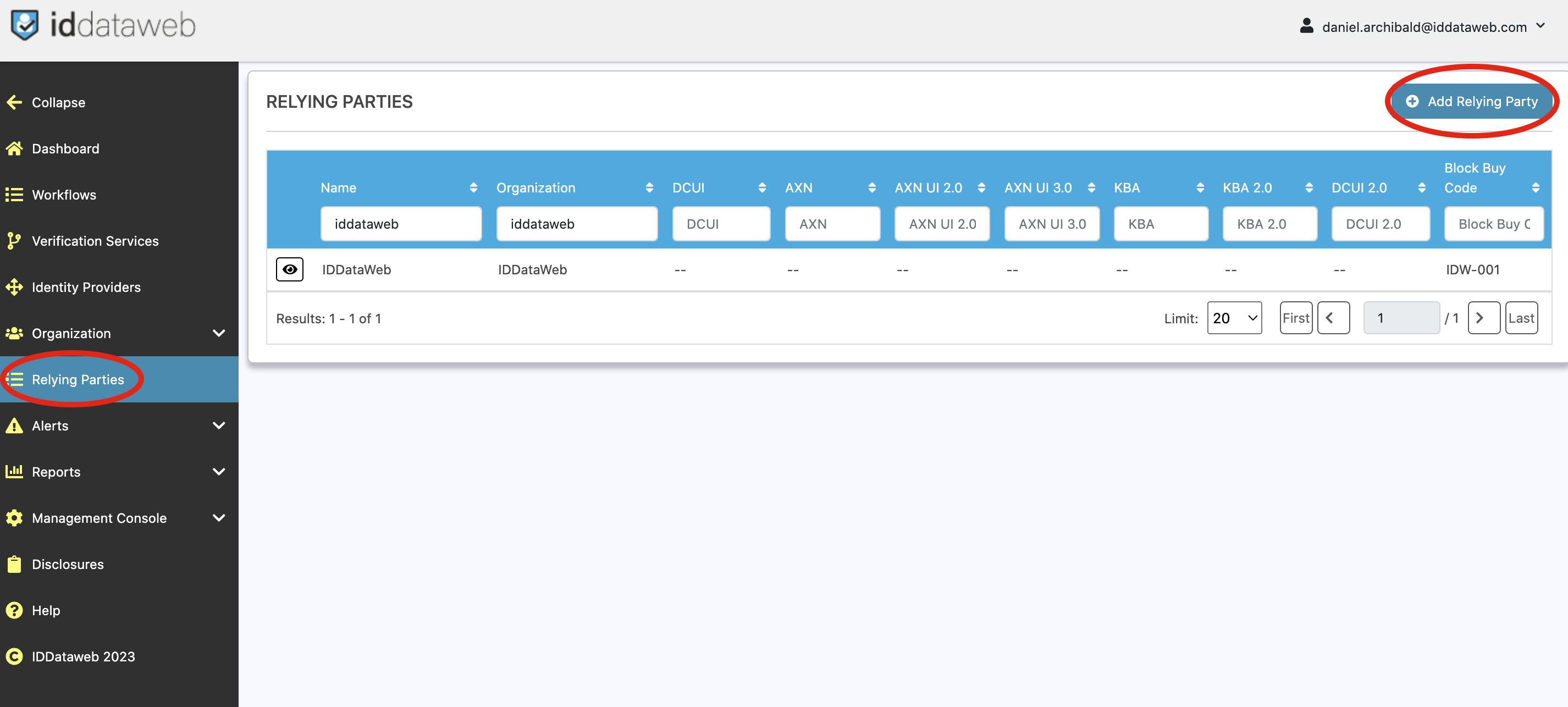Relying Party
Relying Parties can be used to organize Verification Services into logical groupings for your use cases.
Default Relying Party
When you get access to your organization, you will be given a "Default" Relying Party, which will have the same name as your organization. Teams typically deploy their first services into the default Relying Party. Depending on your use case, you may need to never create a second Relying Party.
Best Practices for Adding New Relying Parties
Typically, Relying Parties are used to contain services for several reasons:
- A Relying Party can be used for a specific use case. For example - you may have one Relying Party for "Account Opening", a second for "Adaptive Authentication," and perhaps a third for "Directory Data Batch Processing."
- A Relying Party can be used to manage billing to different groups in your company. For example - if your organization has a centralized shared services model, you can split application's Verification Services into separate relying parties, which can then be billed against different accounts.
Adding a New Relying Party
You can add a new Relying Party by navigating to the Relying Party link on the left navigation menu, then clicking "Add New Relying Party" in the top right.

You can also create a Relying Party when you are creating your first Verification Workflow. To do this, follow the "Create New Verification Workflow" process, and select "Add a New Relying Party". For an overview of the Workflow Creation process, see Creating a new Verification Workflow.

- Once created, you will be able to add new Verification Services and Workflows to this Relying Party, or move existing Verification Services and Workflows into it.
Updated 7 months ago
